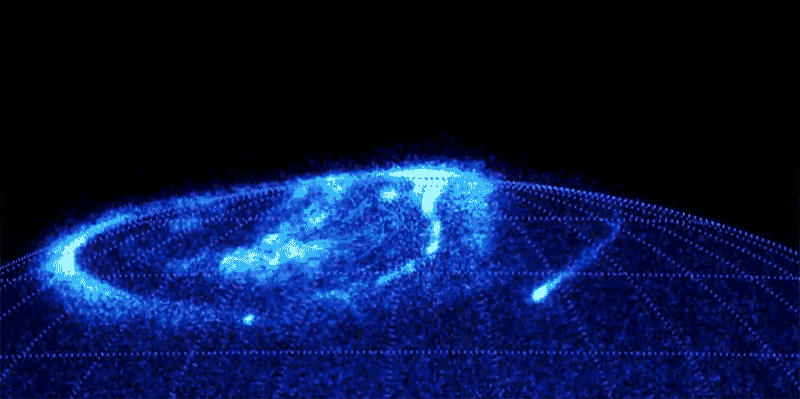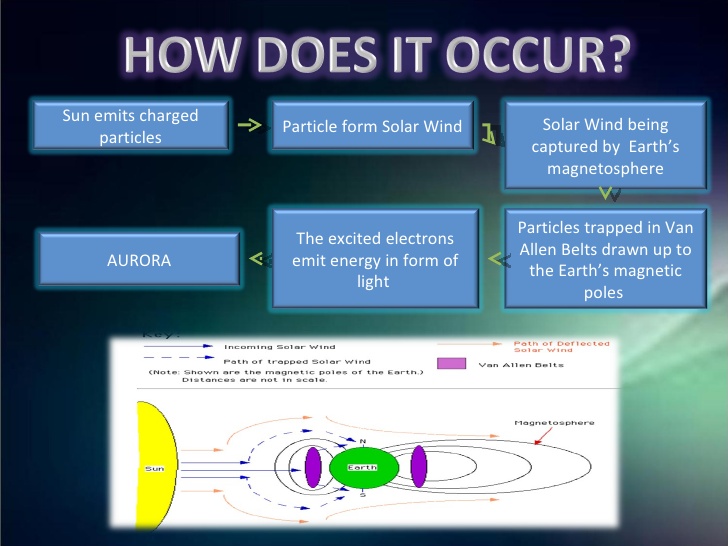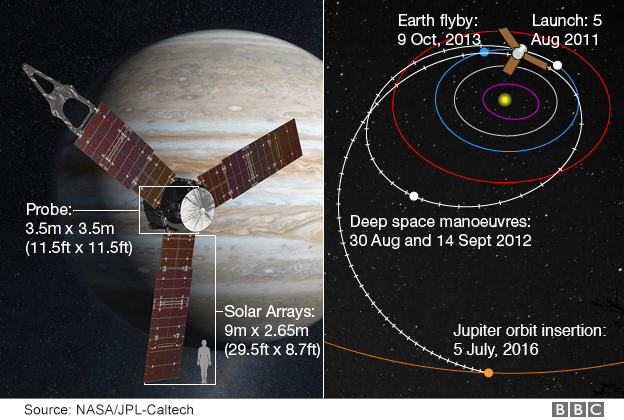
In 1979, the Voyager 1 spacecraft discovered that Alaska, Canada, Siberia, and Antarctica, were not the only places with spectacular auroras or “polar lights” —Jupiter, the largest planet in our solar system, has them as well. While the lights have been studied intensely since then, a recent month-long observation of Jupiter’s north pole by the Hubble Space Telescope has resulted in some beautiful, never before seen images of the planet’s northern lights.
Similar to those on Earth, the polar lights are created when high-energy particles in the atmosphere collide with atoms of gas near the magnetic poles. The auroras on Jupiter are however hundreds of times more energetic and big enough to encompass our entire planet!

Also, unlike on Earth, Jupiter’s northern lights can be observed continuously. The reason for the difference is that Earth's auroras are dependent on solar storms. Each time an explosion on the sun sends down a massive cloud of gas towards our planet, the charged particles rain down on the upper atmosphere, causing the air to glow the with familiar red, green, and purple colors associated with polar lights.
Jupiter’s process begins with its spin. As the massive planet rotates on its axis every 10 hours, it drags along its planetary magnetic field. The rapid spinning generates 10 million volts of electricity around its poles, and sets the stage for the non-stop lights.

The polar electric fields capture any charged particles they can find and slam them into the atmosphere. While we on Earth have to depend on solar storms, Jupiter has another source — It’s moon lo, whose massive volcanoes are always spewing out oxygen and sulfur ions into the planet’s highly charged magnetic field. This helps create auroras that are bigger and more spectacular than those observed on Earth. The only unfortunate part is that the electric blue whirl is ultraviolet. This means the beautiful auroras are not visible to the naked eye and can only be observed with a sophisticated telescope like the Hubble.
The stunning pictures, released by NASA in early July, were compiled from a series of far-ultraviolet images captured by the giant telescope while observing Jupiter’s north pole. The month-long monitoring was timed to coincide with NASA’s Juno spacecraft that entered Jupiter’s orbit on July 4.

Launched in 2011, Juno is scheduled to spend a year orbiting the massive planet. As the space probe travels through Jupiter’s dangerous circuit-frying radiation belts, it will be looking for evidence of a solid core underneath the layers of gas while collecting data on its solar winds and magnetic fields. Scientists hope that the spacecraft will do what Roman and Greek mythology believe its namesake, Jupiter’s wife Juno, purportedly did — look through the clouds surrounding the planet to discover its true nature!
Resources: science.NASA.gov, gizmondo.com, natureworldnews.com